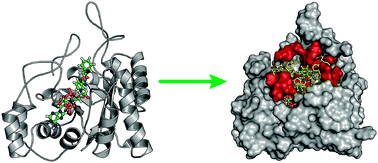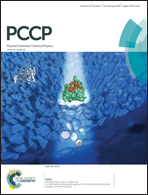A conformational factorisation approach for estimating the binding free energies of macromolecules†
Abstract
We present a conformational factorization approach. The theory is based on a superposition partition function, decomposed as a sum over contributions from local minima. The factorisation greatly reduces the number of minima that need to be considered, by employing the same local configurations for groups that are sufficiently distant from the binding site. The theory formalises the conditions required to analyse how our definition of the binding site region affects the free energy difference between the apo and holo states. We employ basin-hopping parallel tempering to sample minima that contribute significantly to the partition function, and calculate the binding free energies within the harmonic normal mode approximation. A further significant gain in efficiency is achieved using a recently developed local rigid body framework in both the sampling and the normal mode analysis, which reduces the number of degrees of freedom. We benchmark this approach for human aldose reductase (PDB code 2INE). When varying the size of the rigid region, the free energy difference converges for factorisation of groups at a distance of 14 Å from the binding site, which corresponds to 80% of the protein being locally rigidified.


 Please wait while we load your content...
Please wait while we load your content...